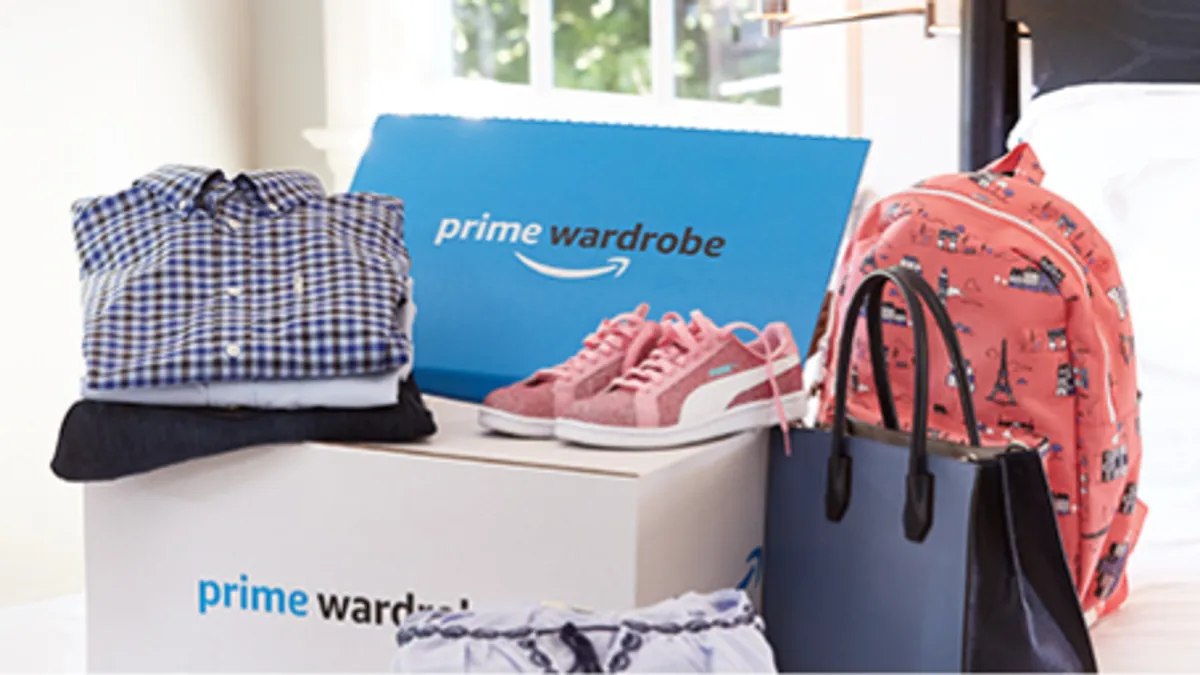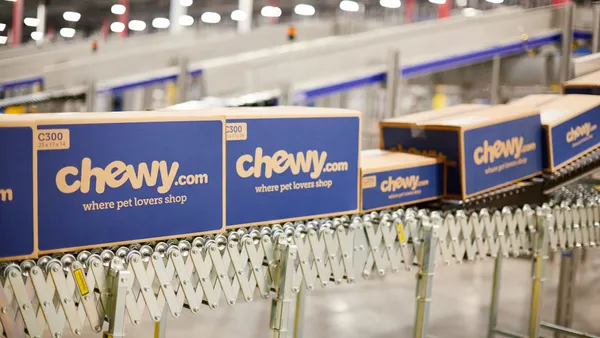Dive Brief:
-
Apparel brands must pay attention to Amazon’s efforts in the space as it continues to sign up brands and market its own private labels, according to research from digital insights firm L2. For the study, L2 analyzed the fashion market on Amazon between January and August to evaluate brand performance, monitor the e-commerce giant's private label investments and identify the brands most affected by gray market distribution on Amazon.
-
Amazon's best seller lists more prominently feature men’s items, like briefs and t-shirts, than women’s. But increasing competition from its private labels is changing that landscape, according to the report, which was emailed to Retail Dive. Meanwhile, unauthorized third-party distribution of branded products is "becoming a sore spot for popular brands like Tory Burch and Rag & Bone," L2 said.
-
The report's release comes as Amazon deepens its competitive push into apparel with the first ad campaign for its clothing brand Find. The campaign, which will run in several European countries and on the company's own website, aims to show consumers that Amazon "has a "unique take" on current fashion trends and a "close eye on street styling," according to the trade publication Marketing Week.
Dive Insight:
Amazon presents a multi-faceted challenge to apparel brands, which face consequences no matter how they respond.
Starting last year, the e-commerce giant has launched a series of private label clothing and accessories brands in various sub-categories, most recently in footwear. The company is also experimenting with various sales and delivery models, including a new apparel subscription service (currently in beta), Prime Wardrobe.
Amazon's own labels complicate already complicated choices for brands. Even when they don’t officially distribute through Amazon, hundreds of their SKUs are available through third-party vendors on its Marketplace, according to the report. For example, there are more than 2,300 Amazon Marketplace listings for Tory Burch items, some with discounts as low as 71% off the manufacturer’s suggested retail price.
And while apparel makers can indeed take more control of their brands on the website when they sell directly through Amazon, they run the risk of Amazon evaluating their best sellers and basing its own Essentials items on the performance.
For example, Amazon Essentials accounted for 4% of its daily best sellers, up from zero a year ago. Its top-performing item was the "Men’s Cotton Pique Polo Shirt," markedly similar to Dockers’ "Men’s Short Sleeve Solid Poly Pique Polo Shirt" at half the price. "With Levi’s/Dockers owning the second highest share of Best Sellers in the Men’s clothing category, this suggests Amazon’s private label brands pose the greatest threat to the very brands that are top of the category today," notes L2.
On Prime Day, for the first time, Amazon’s private label brands Mae (lingerie), Goodthreads (men’s dress shirts), Lark & Ro (women’s dresses) and Buttoned Down (men’s dress shirts) landed in Amazon’s Best Seller rankings in their categories, driven by full-screen visibility on Prime Day’s fashion landing pages, according to L2. In fact, and alarmingly for brands, Amazon’s Fashion landing page on Prime Day this year exclusively featured private label products, the research found. And those private labels maintained much of their momentum after Prime Day.
That’s hardly going to stop, either. "Amazon’s private label brands were the main beneficiaries of Prime Day, suggesting that in the future there will be fewer opportunities for legacy brands to capitalize on busy Amazon shopping days," L2 said in its report. Brands should expect the holidays to be another time when Amazon promotes its own labels, L2 added.














